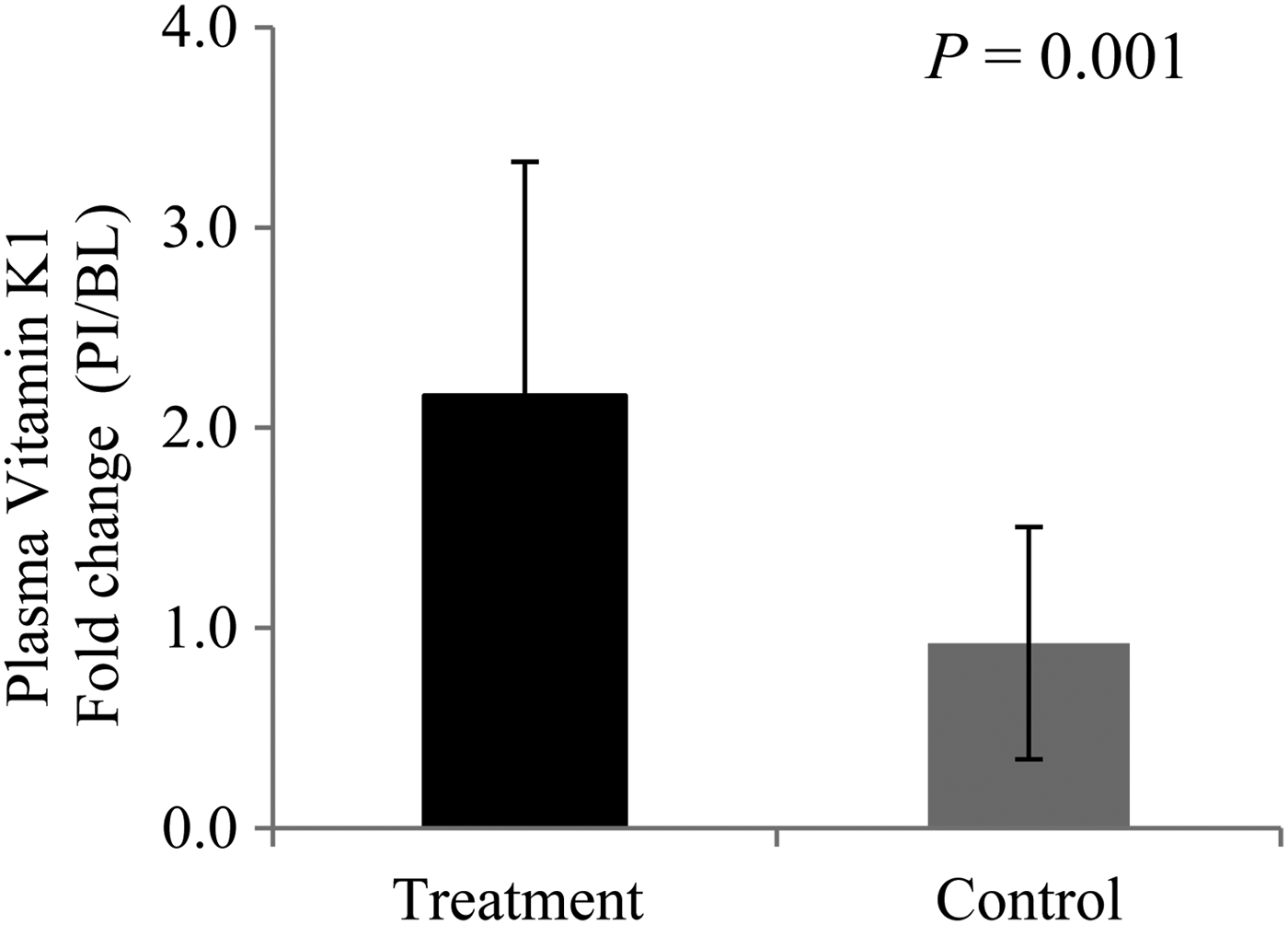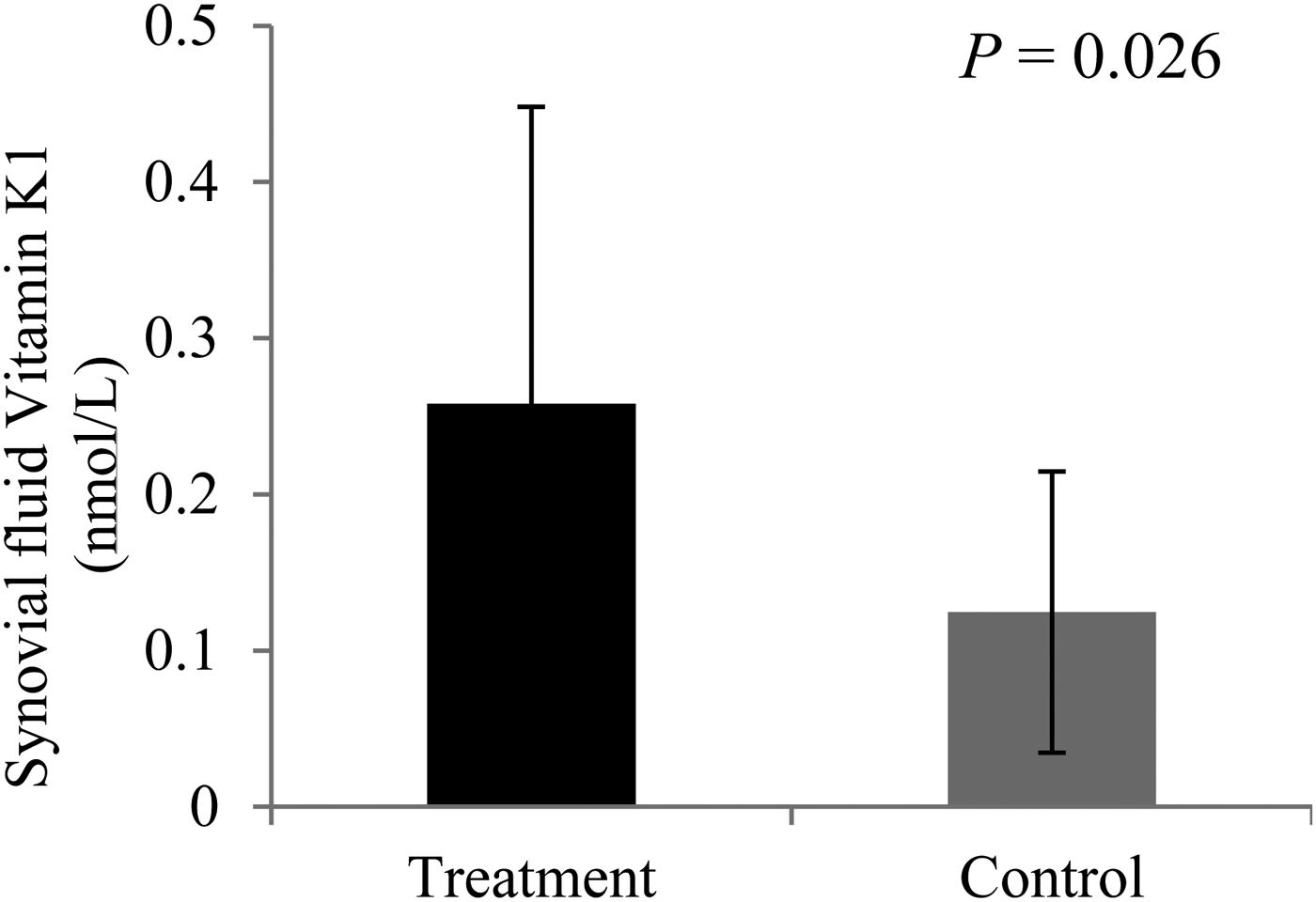Cruciferous vegetables, such as broccoli, cabbage and kale, are rich dietary sources of vitamin K1 (Phylloquinone); however, 55% of Irish adults have phylloquinone intakes below the EU recommendation of 1 µg · kg body weight−1· day(Reference Hayes, Hennessy and Walton1). Vitamin K acts as an enzyme co-factor which carboxylates vitamin K-dependent proteins and is associated with cardio-metabolic(Reference Vaccaro and Huffman2) and musculoskeletal(Reference Knapen, Drummen and Smit3) benefit. Osteoarthritis (OA) is the most prevalent joint disorder in older adults and a major cause of disability. Emerging observational data indicate low vitamin K1 status is associated with a higher incidence of OA(Reference Shea, Kritchevsky and Hsu4).
This feasibility study investigated the response of vitamin K1 in plasma and the synovial fluid of the knee joint following a broccoli-based dietary intervention in adults with knee OA. Men and post-menopausal women awaiting total knee replacement surgery were enrolled in this feasibility study as described by Davidson et al. (2017)(Reference Davidson, Gardner and Jupp5). Participants (n = 37, men/women 17/20, aged 70 ± 8·5 years) underwent a washout period for 7-days where cruciferous vegetable consumption was restricted; prior to being randomised to either increased broccoli consumption (100 g of cooked broccoli/day (treatment n = 17)) or no broccoli consumption (control n = 20) for 14-days prior to surgery. A fasting blood sample was collected at baseline (BL) and post-intervention (PI) (on the morning of the surgery). A synovial fluid sample was collected during surgery (n = 23; control = 13, treatment = 10). Vitamin K1 concentrations were measured in plasma and synovial fluid using reversed phase-HPLC.
Vitamin K1 concentrations did not differ across treatments at BL (P = 0·916). Concentrations of vitamin K1 increased significantly in the treatment (Mean (SD): BL: 1·04 (0·9); PI: 1·82 (1·6) nmol/L) compared to the control group (BL: 1·01 (1·1); PI: 0·71 (0·5) nmol/L) (P = 0·001) (Fig. 1). Vitamin K1 was detected in synovial fluid and was significantly higher in the treatment (0·24 (0·2)) compared to the control group (0·11 (0·1)) (P = 0·026) (Fig. 2).

Fig. 1. Mean fold change in plasma vitamin K1 concentrations by treatment (n = 37) (Independent t test with Welch's correction).

Fig. 2. Mean vitamin K1 concentrations in synovial fluid PI by treatment (n = 23) (Independent t test using log-transformed data).
Results suggest that a modest intake of broccoli (100 g/day) for two weeks significantly increased circulating vitamin K1 concentrations by approximately two-fold. The potential to modulate vitamin K1 in the synovial fluid of the knee joint in response to dietary intervention also warrants further investigation.






